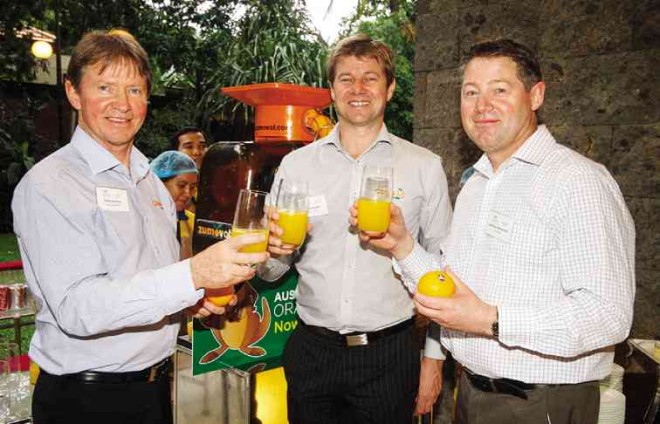
There’s a reason Australian oranges are reputedly the sweetest in the world. Two centuries of citrus production have made the Aussies industry experts in its science and art, something akin to winemaking.
The careful selection of citrus variety, regions where they’re grown and varying climates play a vital role in harvesting naturally sweet fruits wrapped in rich, deep-colored orange skin.
Summer, for example, is best for growing certain varieties when temperatures exceed 40 degrees Celsius. The hot, dry weather makes the fruit produce high sugar levels, making them naturally sweet, while the cold winter nights, with their light frost, give the fruit its rich color.
The regions where the citrus is grown receive very little rainfall, especially those in the southern regions, but they are all irrigated from clean and unpolluted rivers in the Murray-Darling River Basin that stretches for 3,000 kilometers.
It is also in the southern regions where summers are scorching hot and winters are cool, dropping just close to 0 degrees Celsius. Good soil drainage is also essential for growing healthy citrus trees.
“We have chosen very good varieties to grow over the last 200 years. These are not by accident. This is the work of many decades of careful selection by scientist and farmers,” said Andrew Harty, GM for market development of Citrus Australia.
Citrus Australia, which has already been exporting oranges to the country (albeit modestly, just 600 tons per year), is now planning to bring in a total of 10,000 tons in 10 years’ time.
“We note that there is a strong demand from Filipino consumers for fresh, tasty ingredients, and this is helping drive demand for fresh Australian citrus products,” said Austrade senior trade commissioner Anthony Weymouth.
Harty added that he had gone around the grocery stores in Manila, and found that they are on par with—if not better than—Australian stores in terms of standard of safety and cleanliness.
These oranges are not cheap, though. Each piece will cost P30-P50.
“Don’t expect to get the cheapest oranges from Australia. That’s not going to happen. We send those oranges to our juice factories. Our fruits always target the premium end of the market,” Harty said.
Harty added that Australia is famous for its high-quality, sweet, seedless navel oranges that come in three types: early season, mid-season and late season. That means the Australian oranges have long shipping time, from May to October every year.
Pollution-free farms
“Australian farms are known for being pollution-free, with high standards of food safety. We are proud of our Australian oranges, which are ‘sweet, safe and healthy,’” said Australian Ambassador to the Philippines Bill Tweddell. Tweddell hosted the launch of “Australian Orange-Now in Season” in his residence at Forbes Park, attended mostly by retail and industry reps.
Australian orange production incorporates the Integrated Pest Management technology, where farmers inspect the trees each week to create a balance of good and bad insects, said David Daniels, citrus market access manager of Citrus Australia.
“The good insects destroy the bad insects, so this natural way of pest control is far better than using agrochemical sprays. We have special factories that grow the good insects. After many decades of scientific research and training of our farmers, we now have an orange industry that uses very few agrochemicals,” Daniels said.
Product safety, added Daniels, is also assured with the traceability of all consignments. Recorded electronically, this can accurately identify dates the fruits were packed, when they were picked, and what farm practices were used to grow them.
The fruits are also tested in labs for agrochemical residues. “This process is quite expensive, but it is critically important to assure customers of the safety of our oranges,” Daniels said.
There are many health benefits for eating oranges. A typical fruit has more than 60 flavonoids and 170 phytonutrients, compounds that are anti-inflammatory, antioxidant and antitumor, and vitamin C and A, Harty said.
“We grew up knowing citrus is good for our health, but a lot of the younger generation now don’t get that message. We have this terrible junk-food mentality. Junk food is not for anybody. It might taste good but it has nothing for you. Let’s teach our children healthy dietary choices,” Harty said.
Orange is also high in fiber, encouraging healthy bowel movement, excellent for assisting with weight loss, and also promoting healthy, beautiful skin. The phytonutrients, he added, have been shown to improve the health of your heart.
Citrus Australia is now in full gear for the month-long promotion of “Australian Oranges-Now in Season.” It will feature sampling activities in key groceries and supermarkets in Metro Manila until September, including Robinsons Supermarket, Rustan’s Fresh, Rustan’s Supermarket and Shopwise.